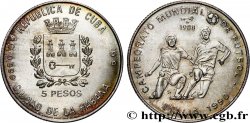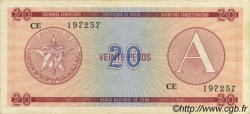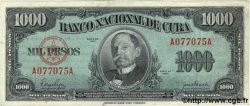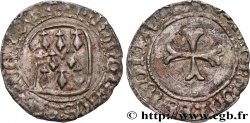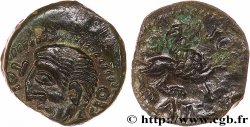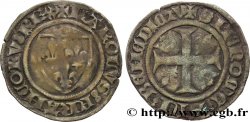fwo_804497 - CUBA 4 Reales contremarqué en 1841 pour la circulation à Cuba 1811 (1841)
non disponibile.
Articolo venduto sul nostro negozio (2025)
Prezzo : 150.00 €
Articolo venduto sul nostro negozio (2025)
Prezzo : 150.00 €
Tipo : 4 Reales contremarqué en 1841 pour la circulation à Cuba
Data: 1811 (1841)
Quantità coniata : -
Metallo : argento
Titolo in millesimi : 900 ‰
Diametro : 26,2 mm
Asse di coniazione : 12 h.
Peso : 5,50 g.
Orlo : décorée
Commenti sullo stato di conservazione:
avec contremarque
N° nelle opere di riferimento :
Diritto
Titolatura diritto : •IOSEPH•NAP• •DEI•GRATIA• // 1811.
Descrittivo diritto : buste à droite de Joseph Napoléon.
Rovescio
Titolatura rovescio : •HISPANIARUM ET IND•REX. M•A•I• .
Descrittivo rovescio : écu couronné .
Commento
Au début du XIXe siècle, la décolonisation cause la perte des ateliers monétaires coloniaux espagnols (Mexico, Lima, Potosi,...). Ceci cause une grave pénurie de monnaie à Cuba, île restée loyaliste. L’introduction clandestine de monnayage d’inflation (real de vellon) cause beaucoup de désordre avec de multiples cours. Le gouverneur interdit en 1827 leur usage et par un décret royal du 22 avril 1841, les monnaies sont rappelées, comptabilisées et contremarquées..
At the beginning of the 19th century, decolonization led to the loss of Spanish colonial mints (Mexico City, Lima, Potosi, etc.). This caused a serious shortage of coin in Cuba, an island that remained loyalist. The clandestine introduction of inflationary coinage (real de vellon) caused a great deal of disorder with multiple courts. The governor banned their use in 1827, and by royal decree of April 22, 1841, the coins were recalled, counted, and countermarked.
At the beginning of the 19th century, decolonization led to the loss of Spanish colonial mints (Mexico City, Lima, Potosi, etc.). This caused a serious shortage of coin in Cuba, an island that remained loyalist. The clandestine introduction of inflationary coinage (real de vellon) caused a great deal of disorder with multiple courts. The governor banned their use in 1827, and by royal decree of April 22, 1841, the coins were recalled, counted, and countermarked.







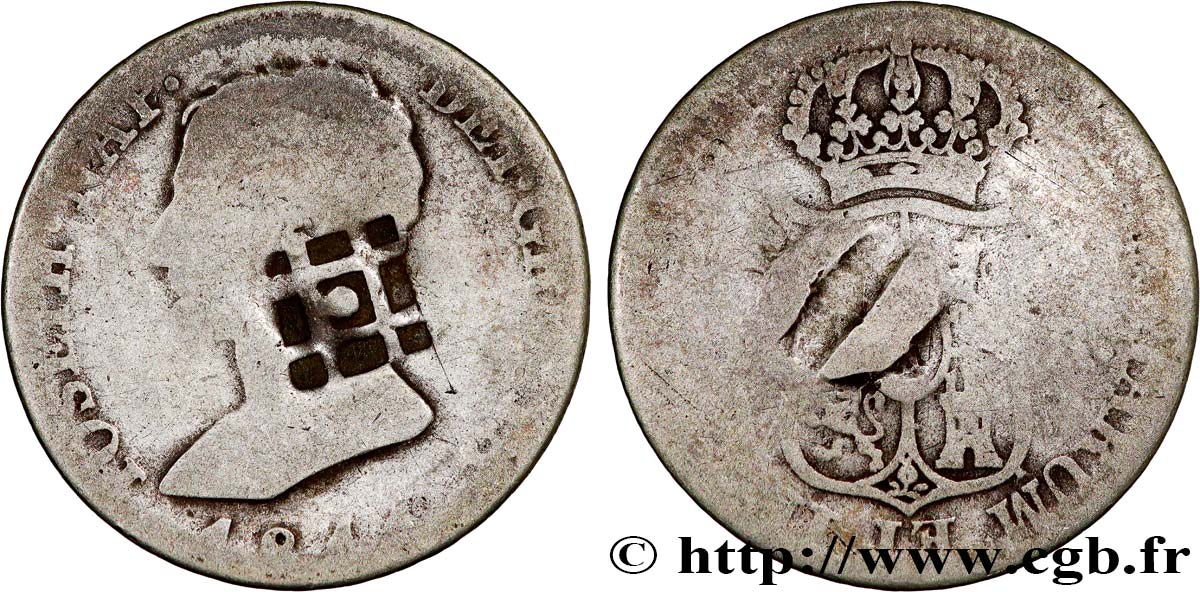
 Segnalare un errore
Segnalare un errore Stampate la pagina
Stampate la pagina Condividi mia selezione
Condividi mia selezione Fai una domanda
Fai una domanda Consegnare / vendere
Consegnare / vendere
 Descrittivo
Descrittivo
